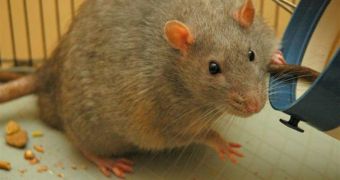A new review on how lab mice and rats are being treated and experimented upon shows that the unhealthy conditions in which the animals live may be keeping scientists from progressing, and even skewing their results. The report highlights the fact that most research groups keep their animals in extremely unhealthy conditions, with direct access to food whenever they want, and without stimulating them to exercise sufficiently to keep in shape. This could hinder research in the sense that a potential low-calorie diet, tested in mice first, may not work for humans because the mice approach was applied once the animals were already too fat for their own good, or otherwise incapacitated.
Investigators believe that the animals should always be kept in the best possible state of health. It's only through this approach that the results obtained from studying them become valid for the general human population. Otherwise, they say, the findings only apply to fat, sedentary people, who don't move around much. In the case of fit individuals, the results derived from animal testings might not apply. The report discovered that the mice's health state may also contribute to the end-result of the investigations carried out on these animals, in the sense that they, for example, produce more of a certain hormone when they are fat, which interacts with some drugs to produce a beneficial effect.
When science teams try to translate that into fit humans, they fail. In fact, the health condition of lab animals may be one of the main reasons why only a small amount of the beneficial results obtained in mice and rats can be translated into human therapies. Researchers at the Bethesda, Maryland-based US National Institute on Aging say that a completely new approach to animal studies needs to be devised, if the work is not to be misleading, or useless. “The vast majority of investigators who use rats and mice don't recognize that their normal conditions are relatively unhealthy. The most logical way to extrapolate is to say any data we obtain in the animal model would be more relevant to overweight, sedentary humans than normal-weight, active individuals,” says the NIA Laboratory of Neurosciences chief, Mark Mattson, who is also the coauthor of the new investigation, Nature News reports.
In response to the conclusions of this paper, researchers say that some merit to the claims exists. “But I suspect it's one of many factors that are responsible for the difference between animal models and human diseases,” says University of Cambridge Department of Veterinary Medicine director of research, Robin Franklin. The expert adds that the reasons presented in the paper are credible, but says that in her personal work she has not come across such problems with unhealthy lab animals. “I think [the paper] is going to carry a lot of weight,” concludes the executive director of the Association for Assessment and Accreditation of Laboratory Animal Care, Christian Newcomer.

 14 DAY TRIAL //
14 DAY TRIAL //